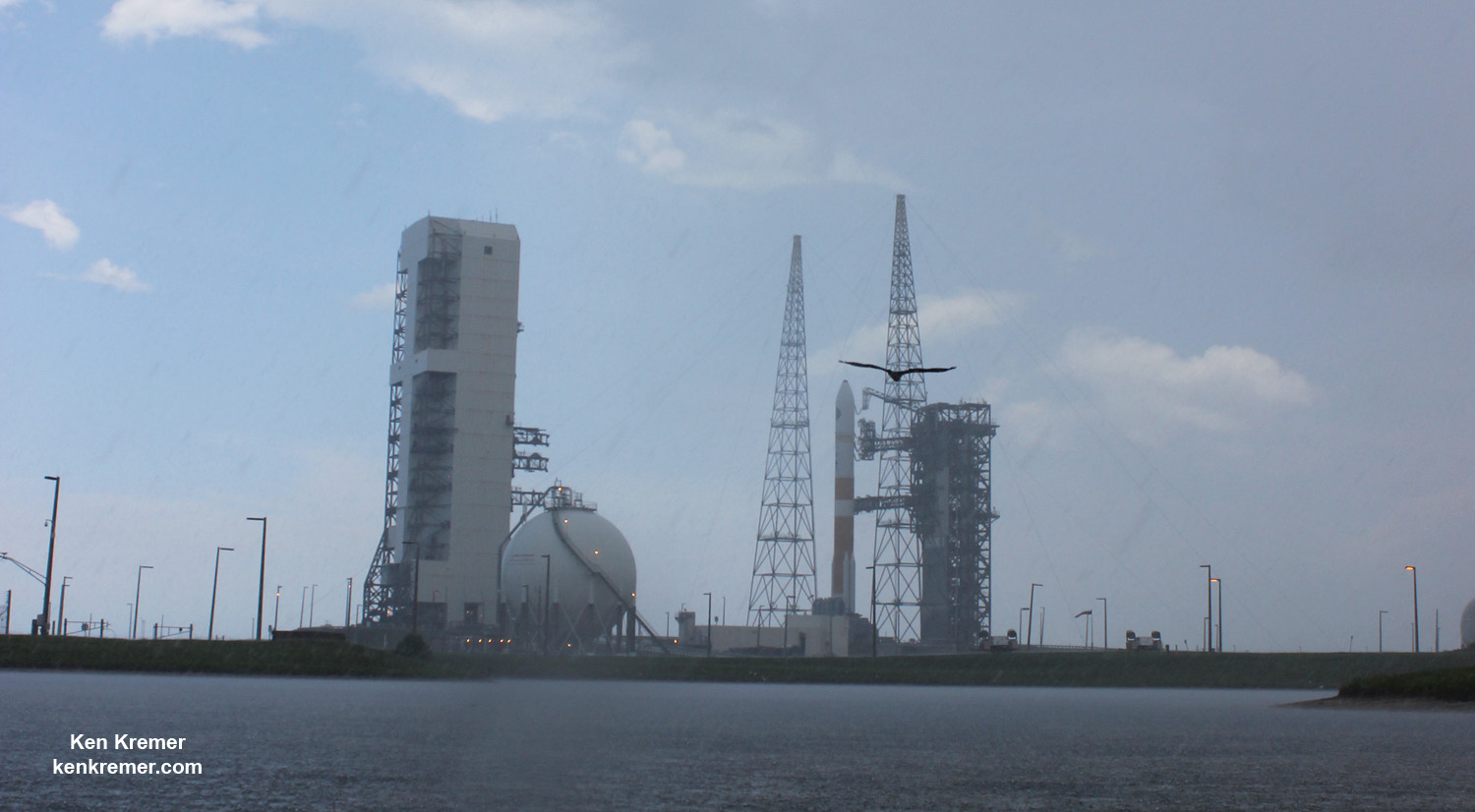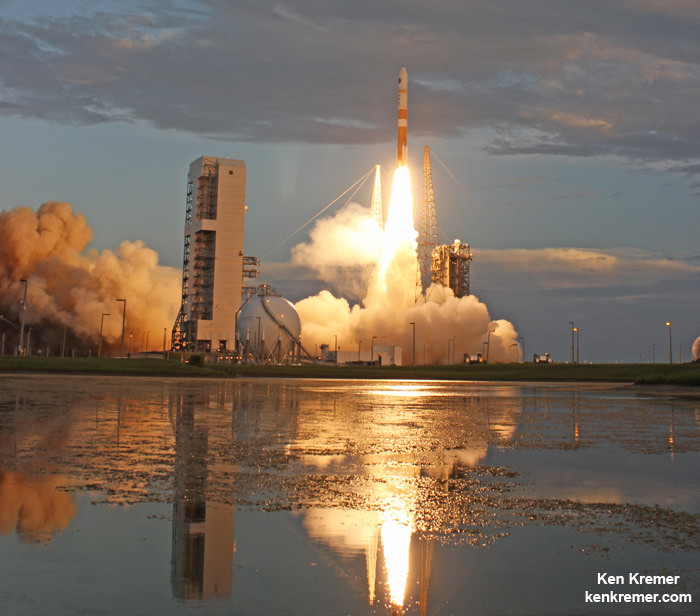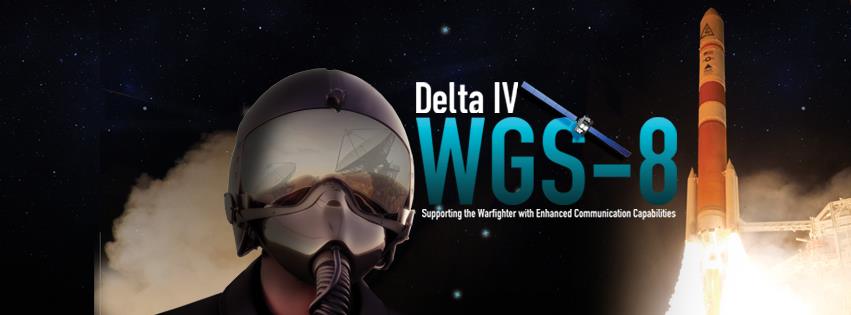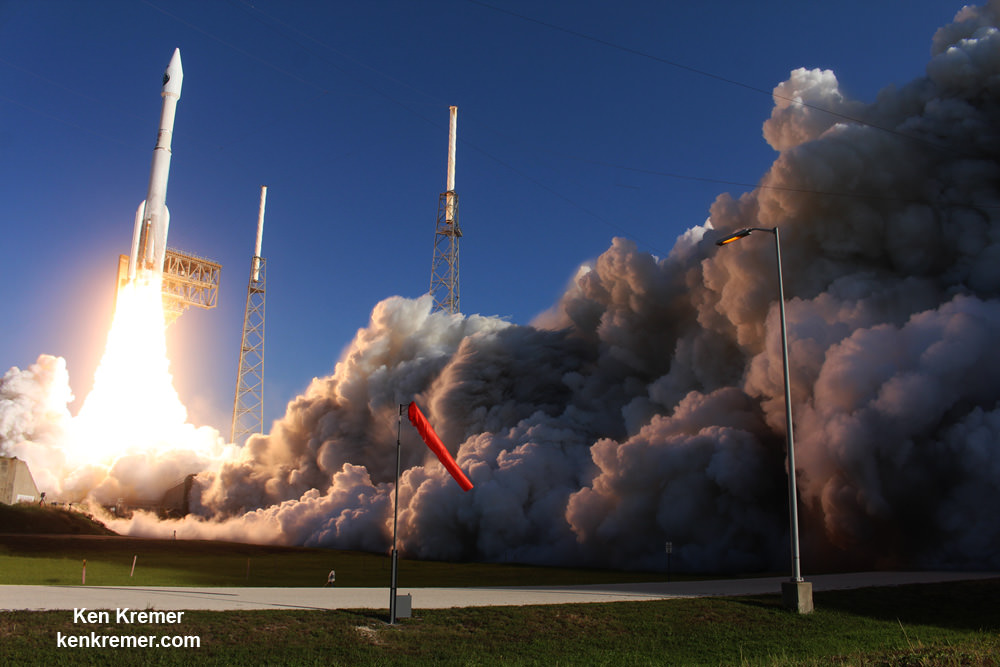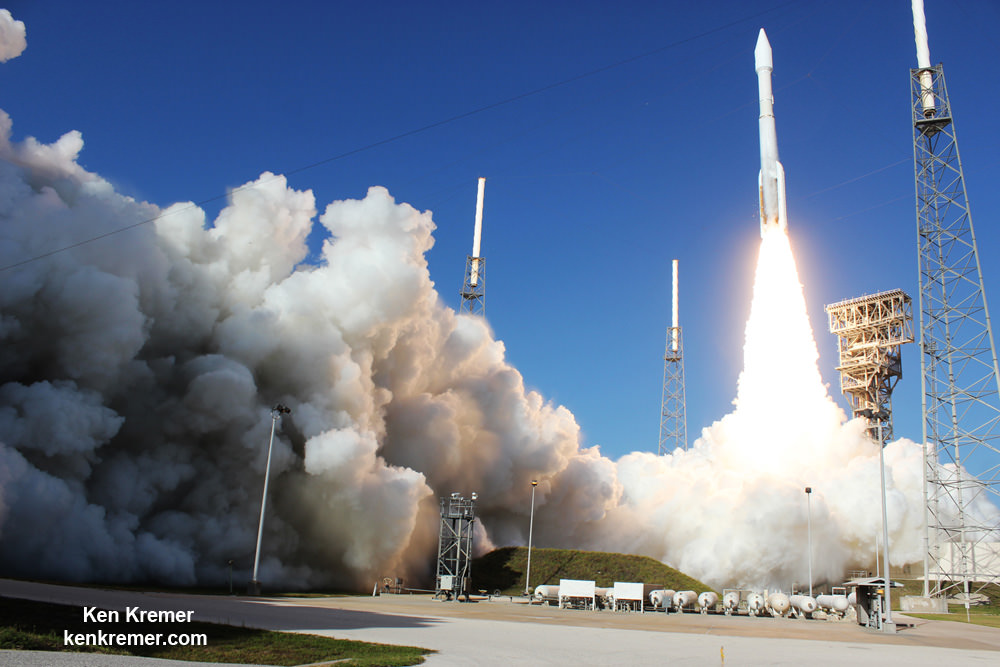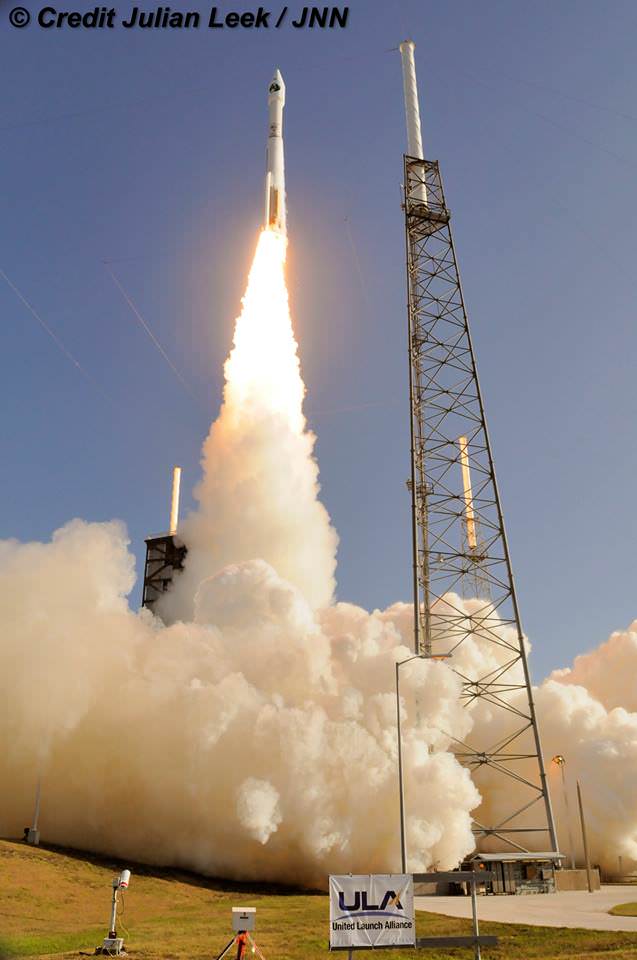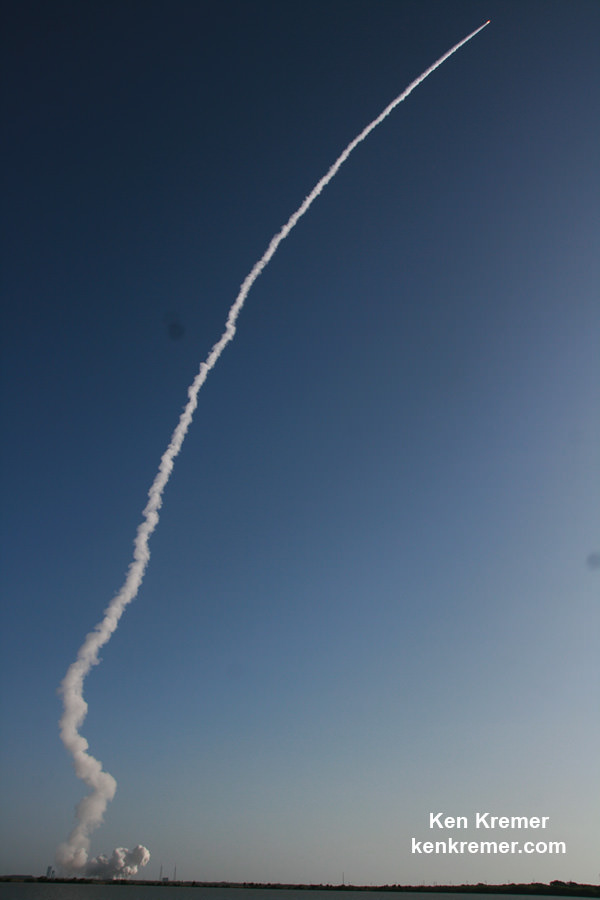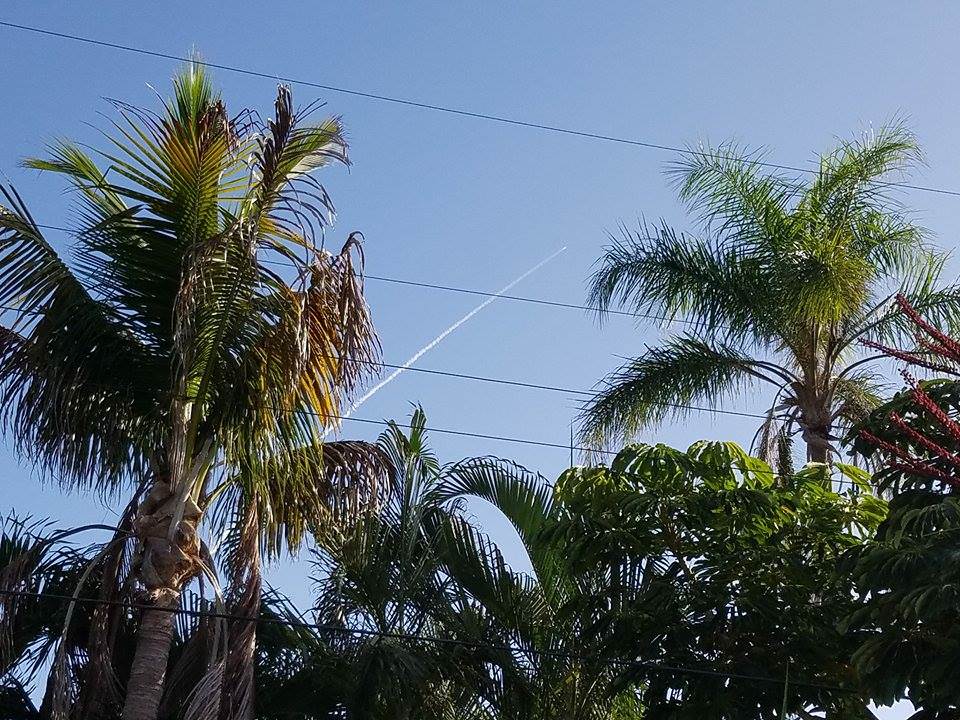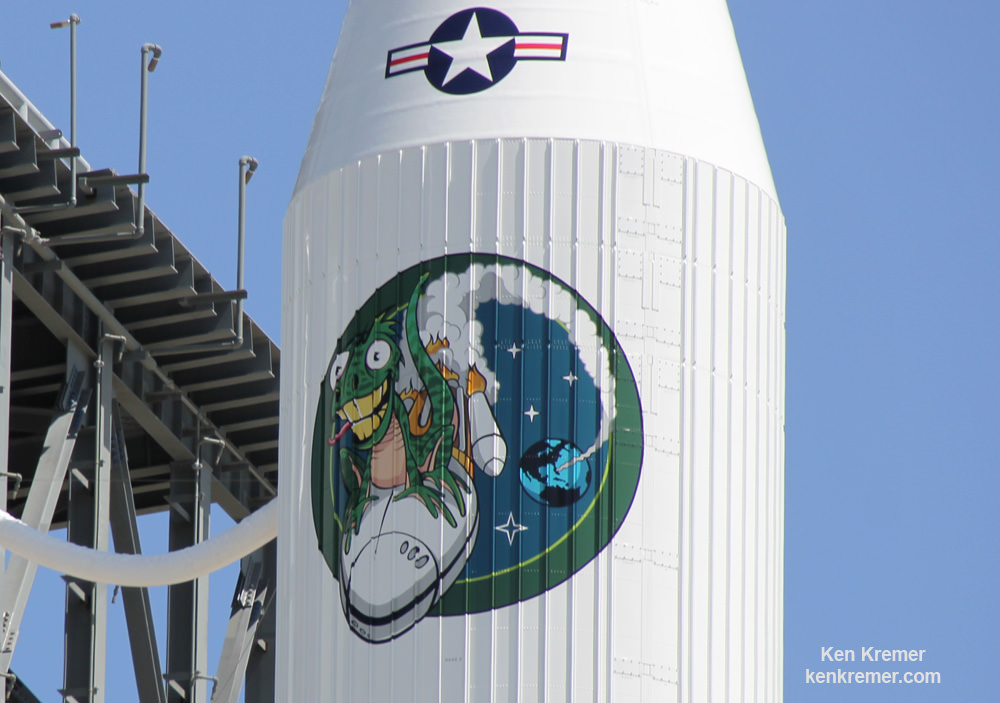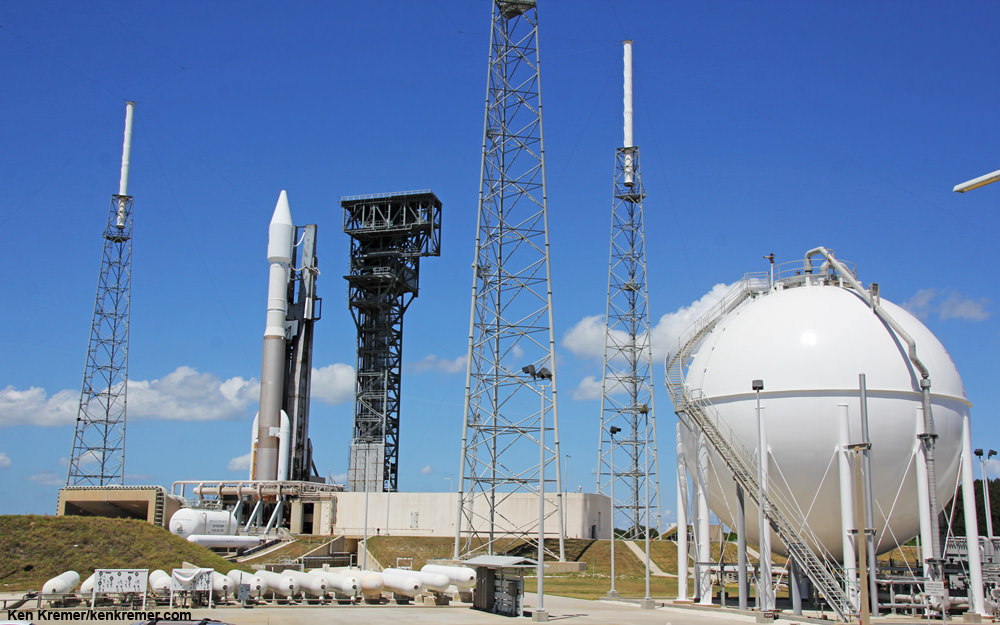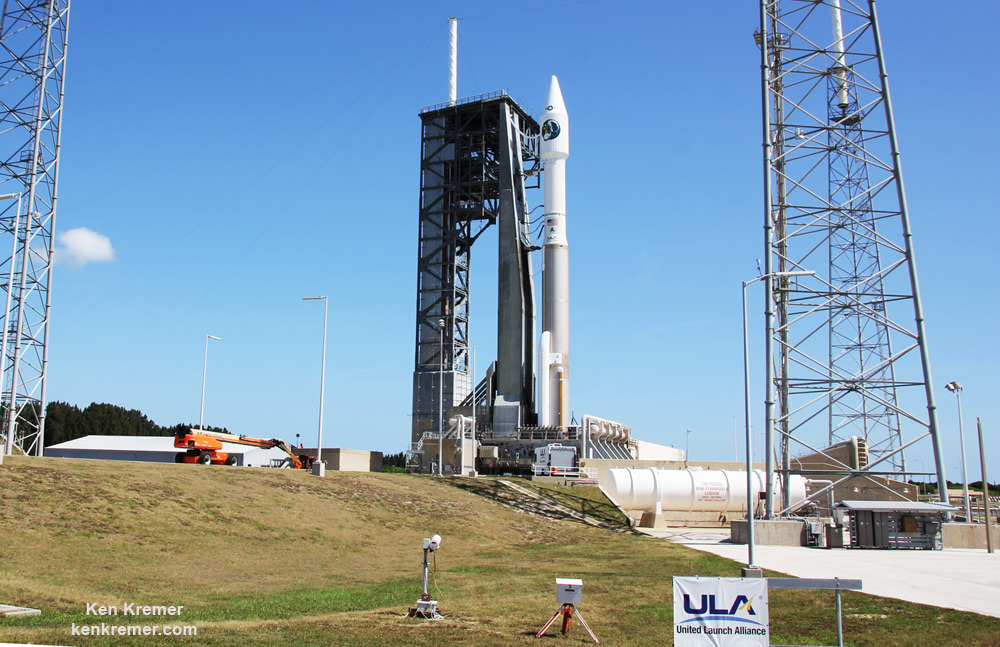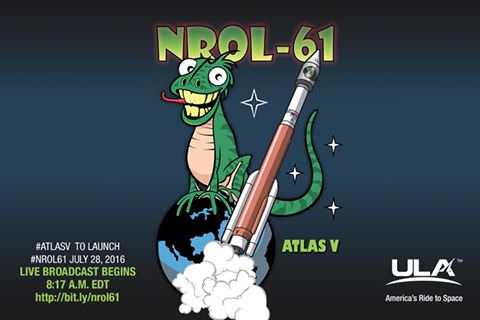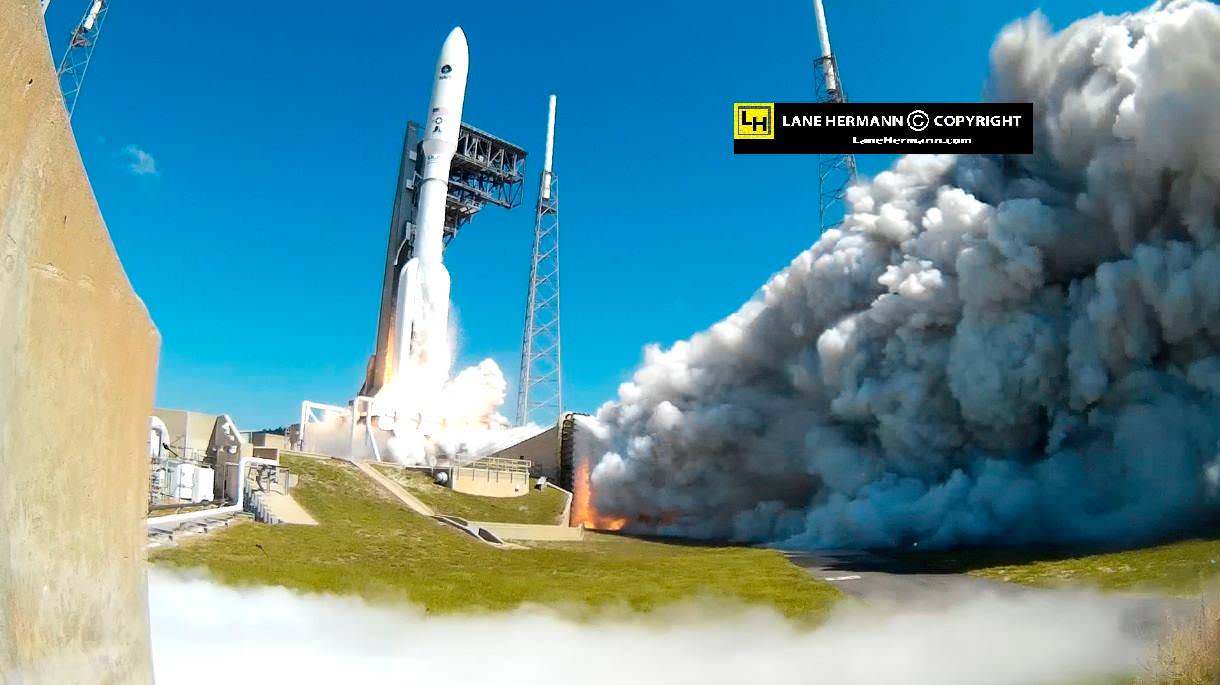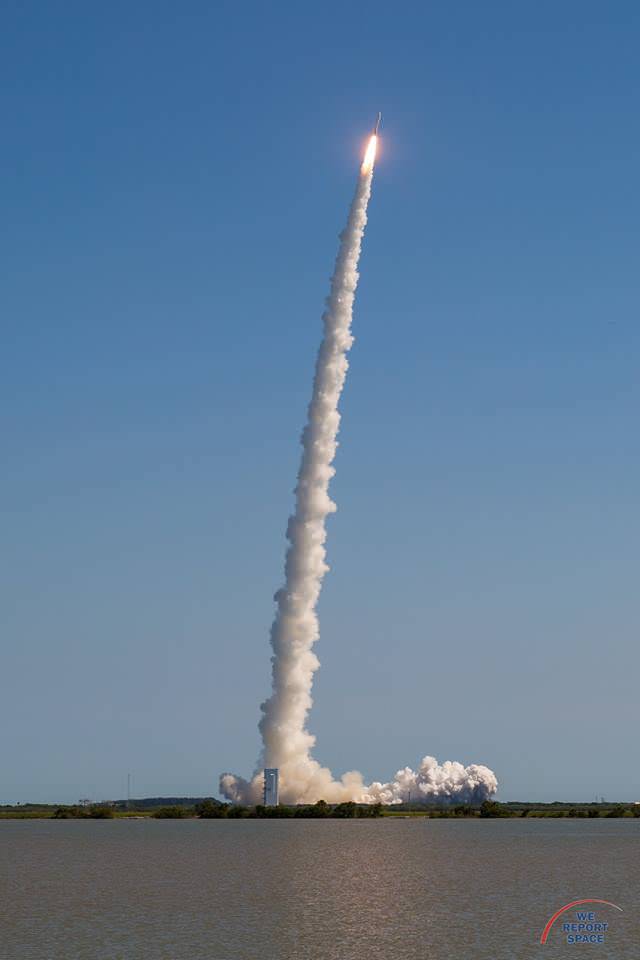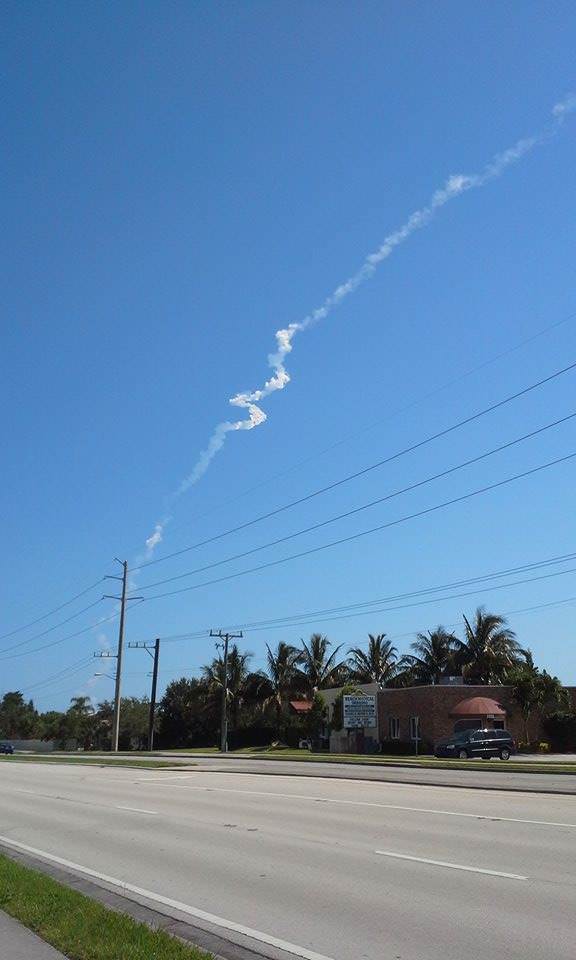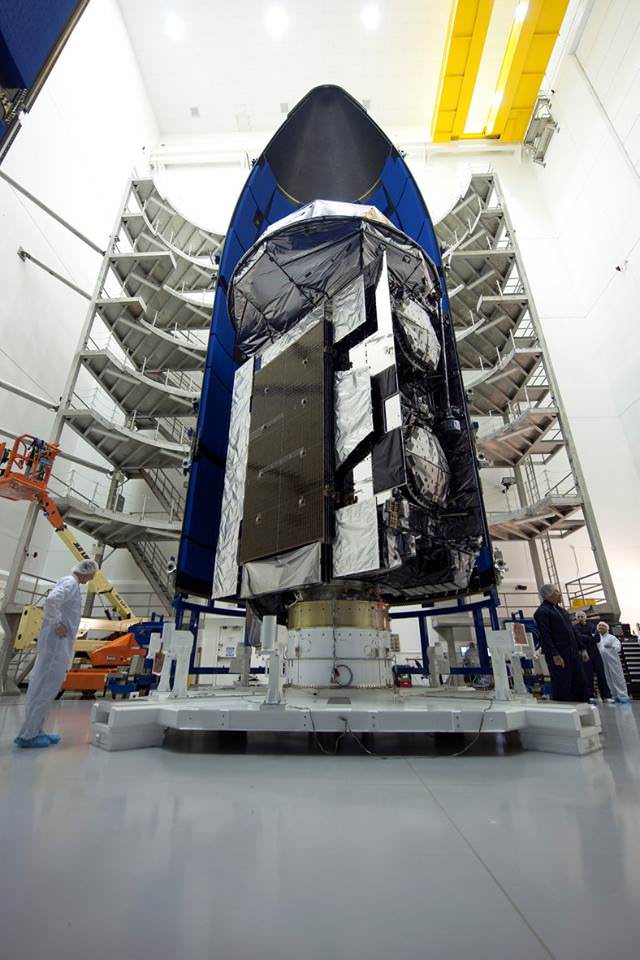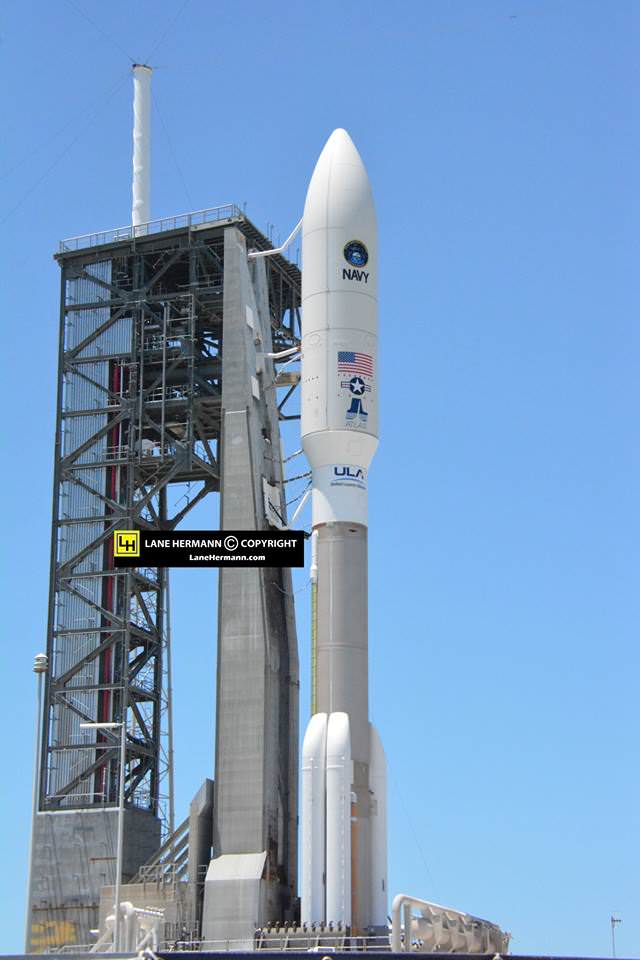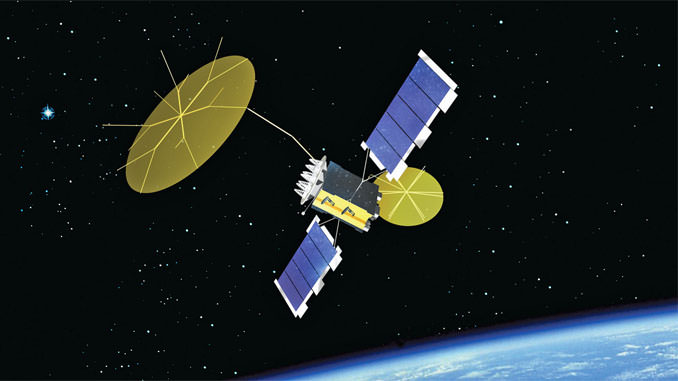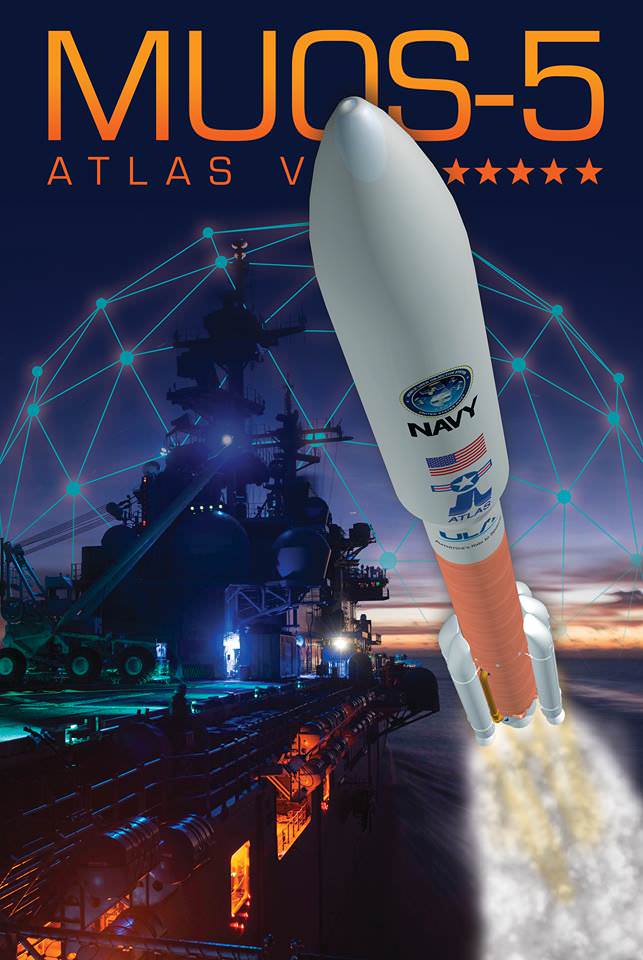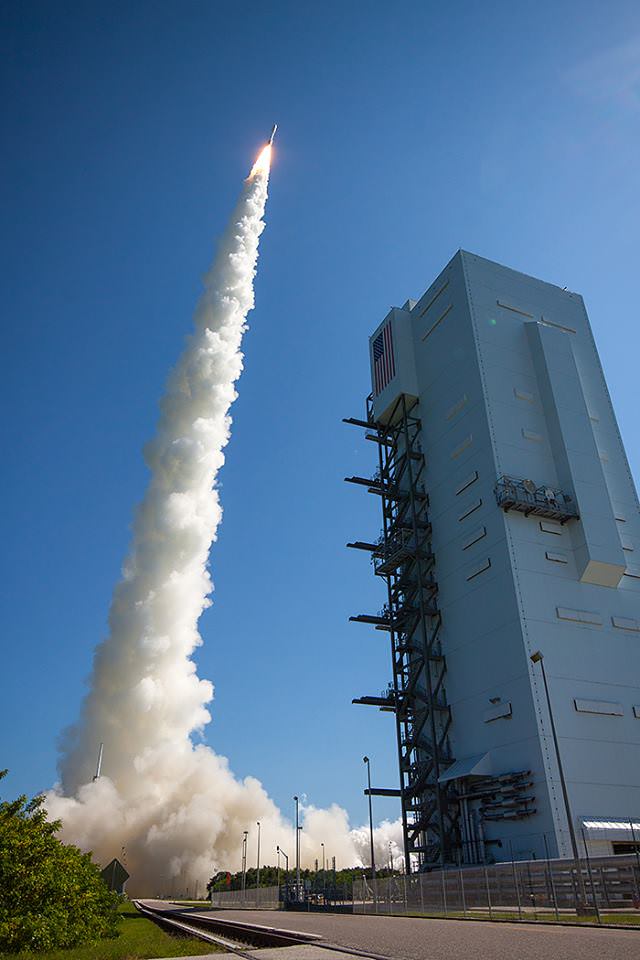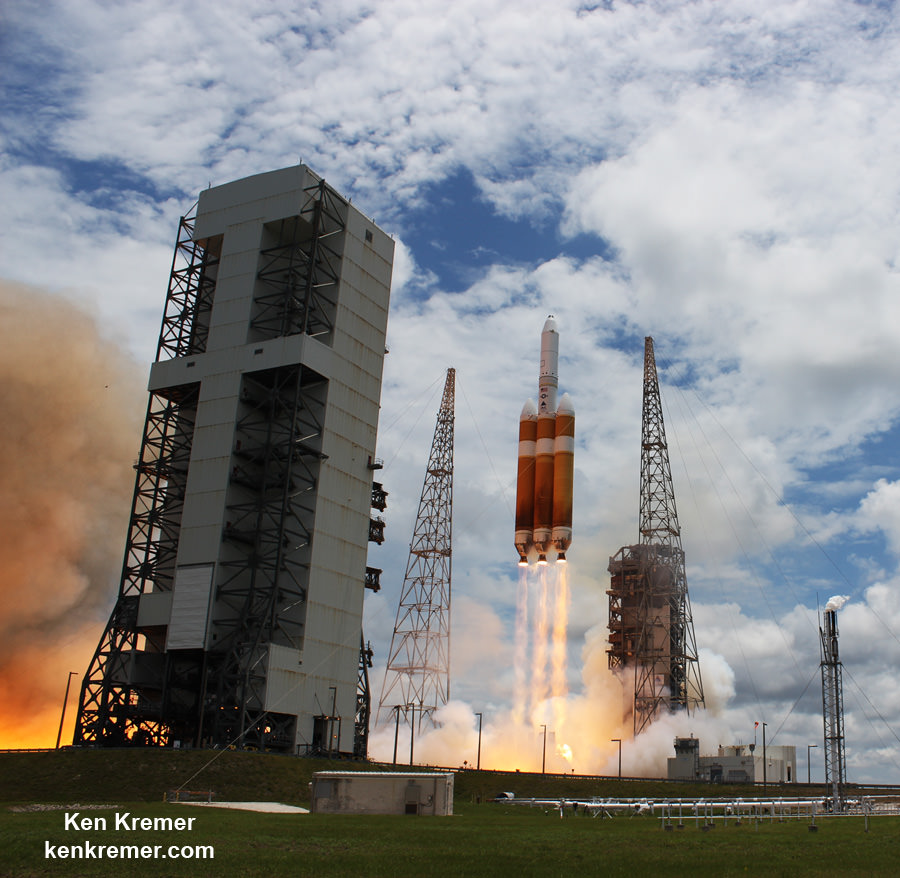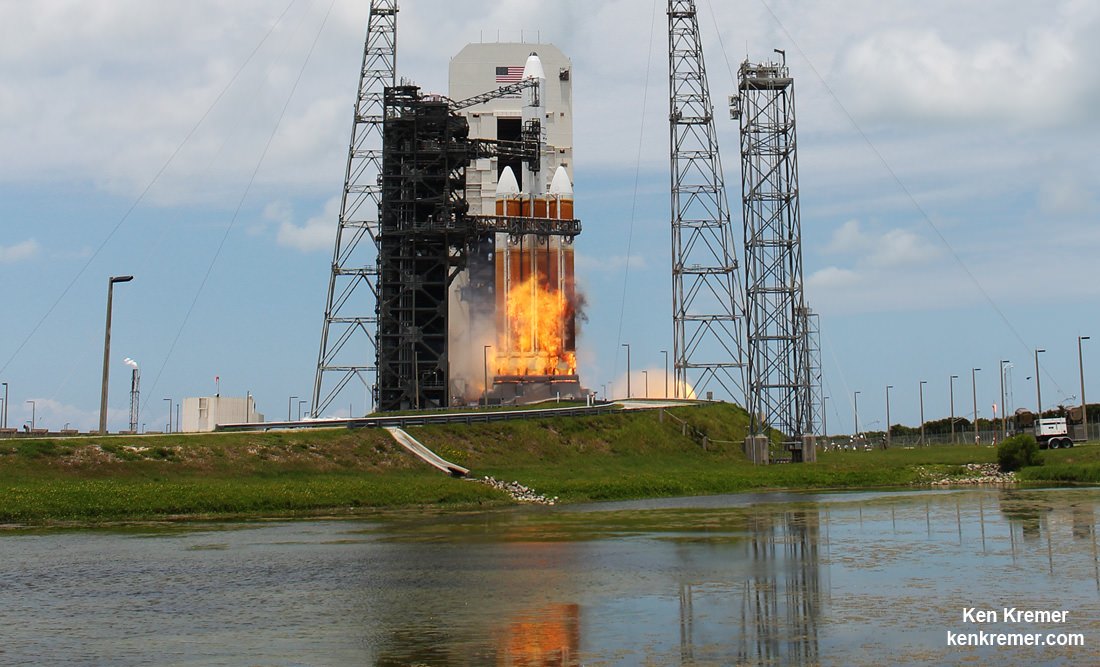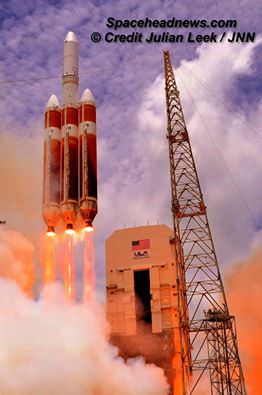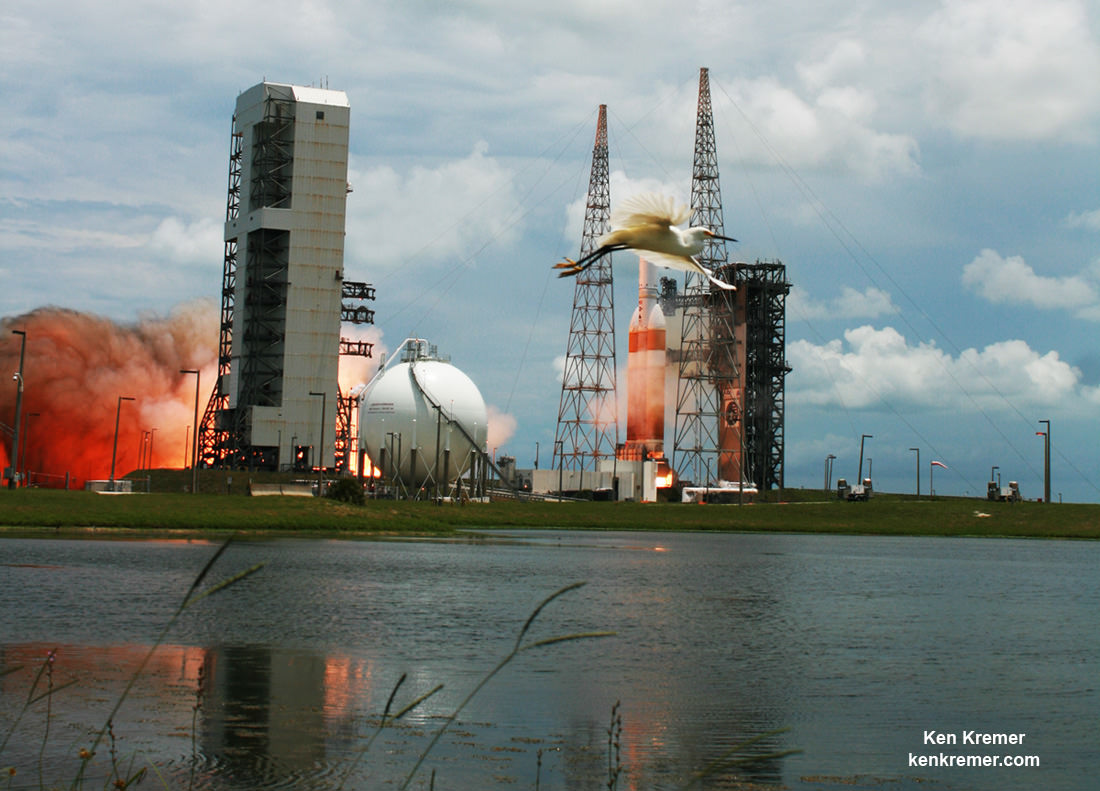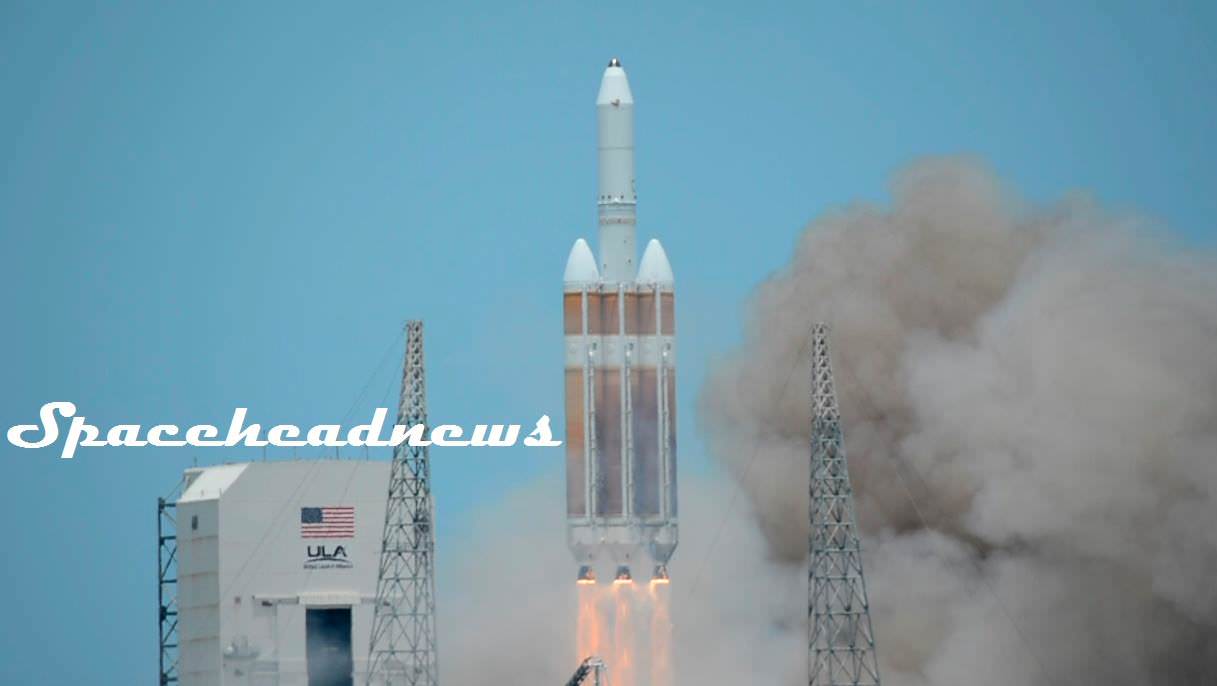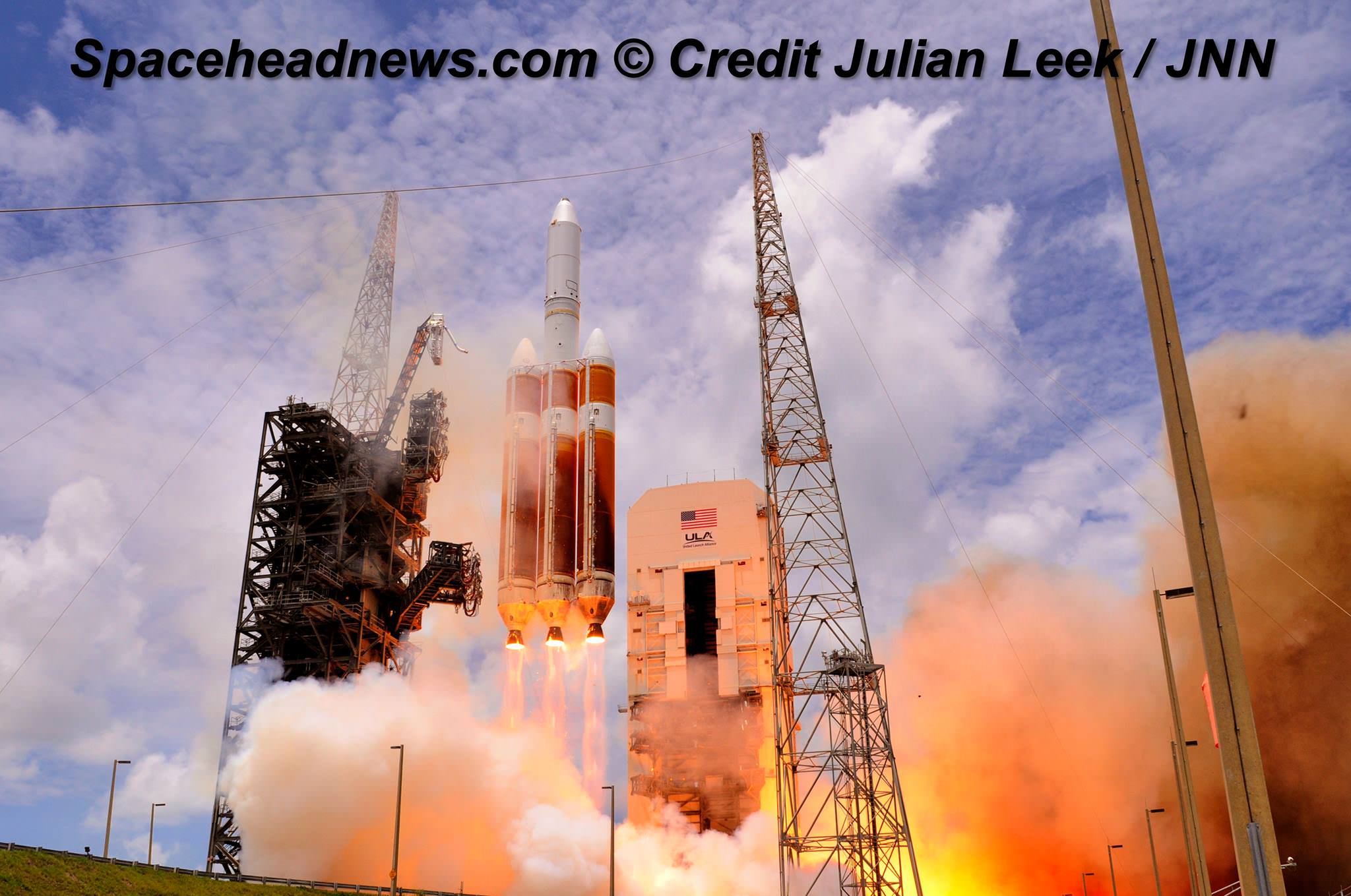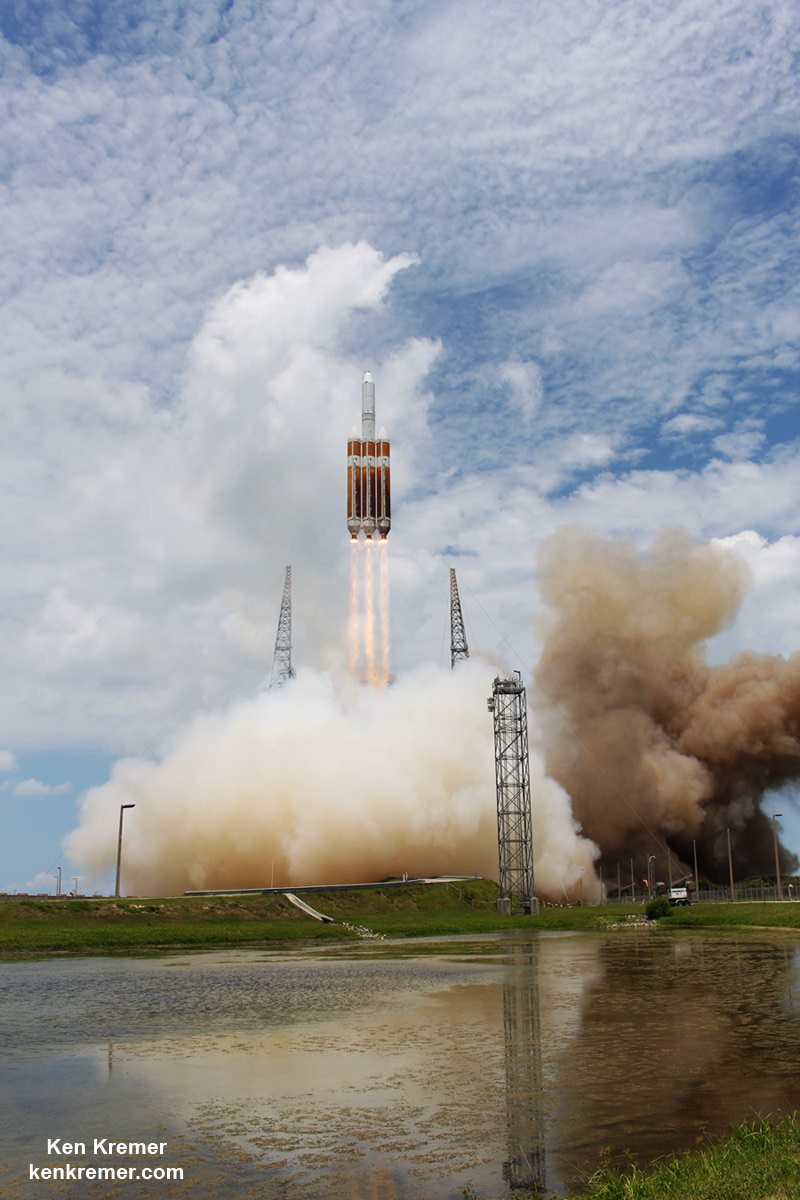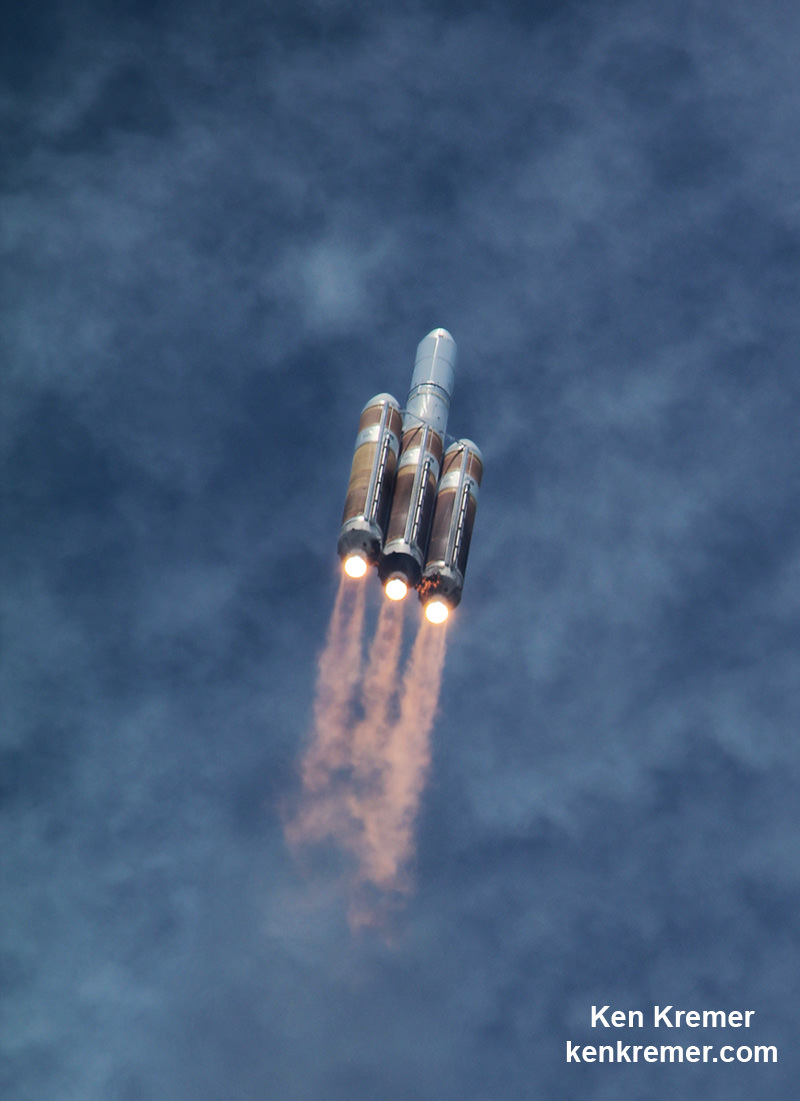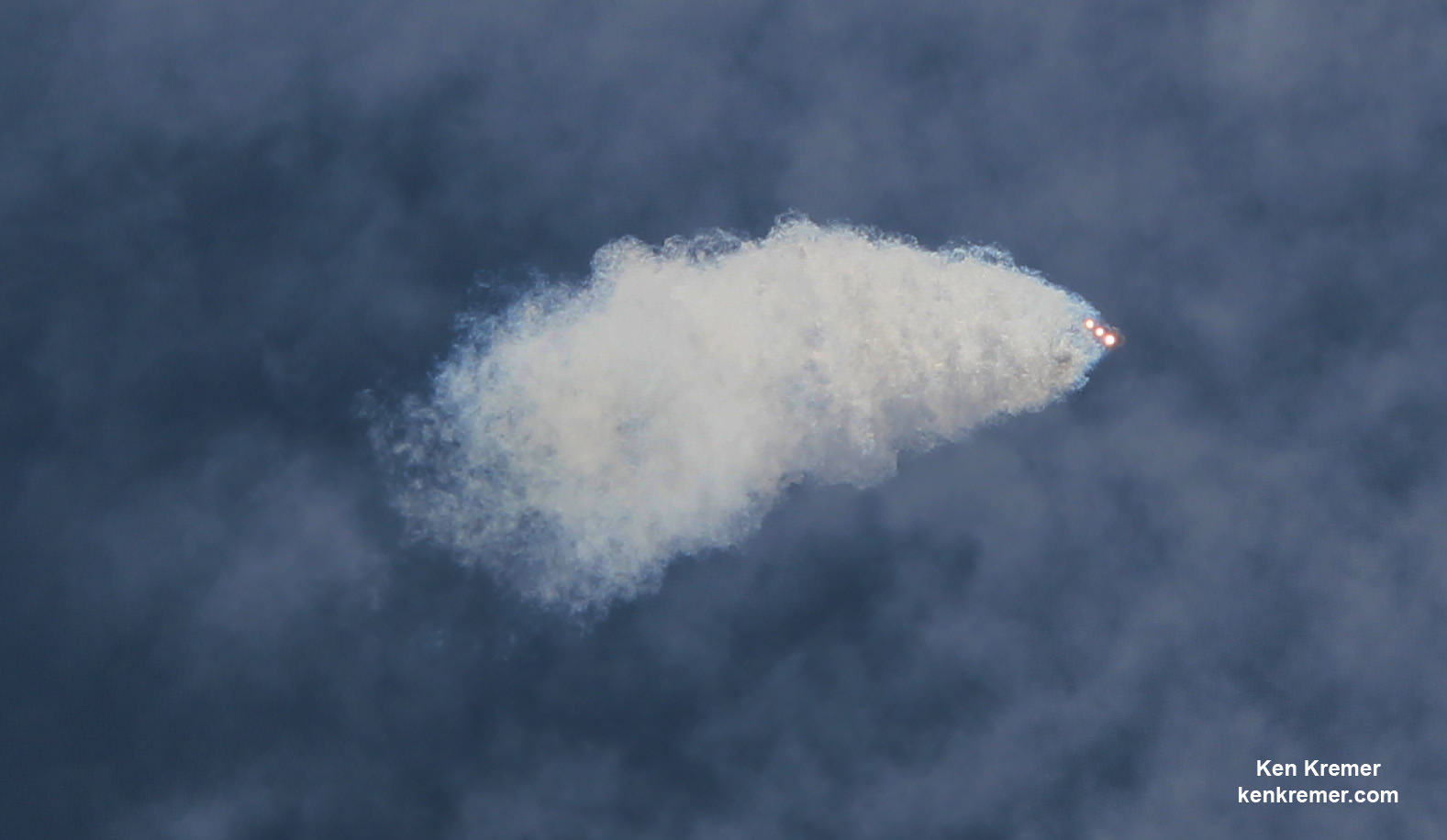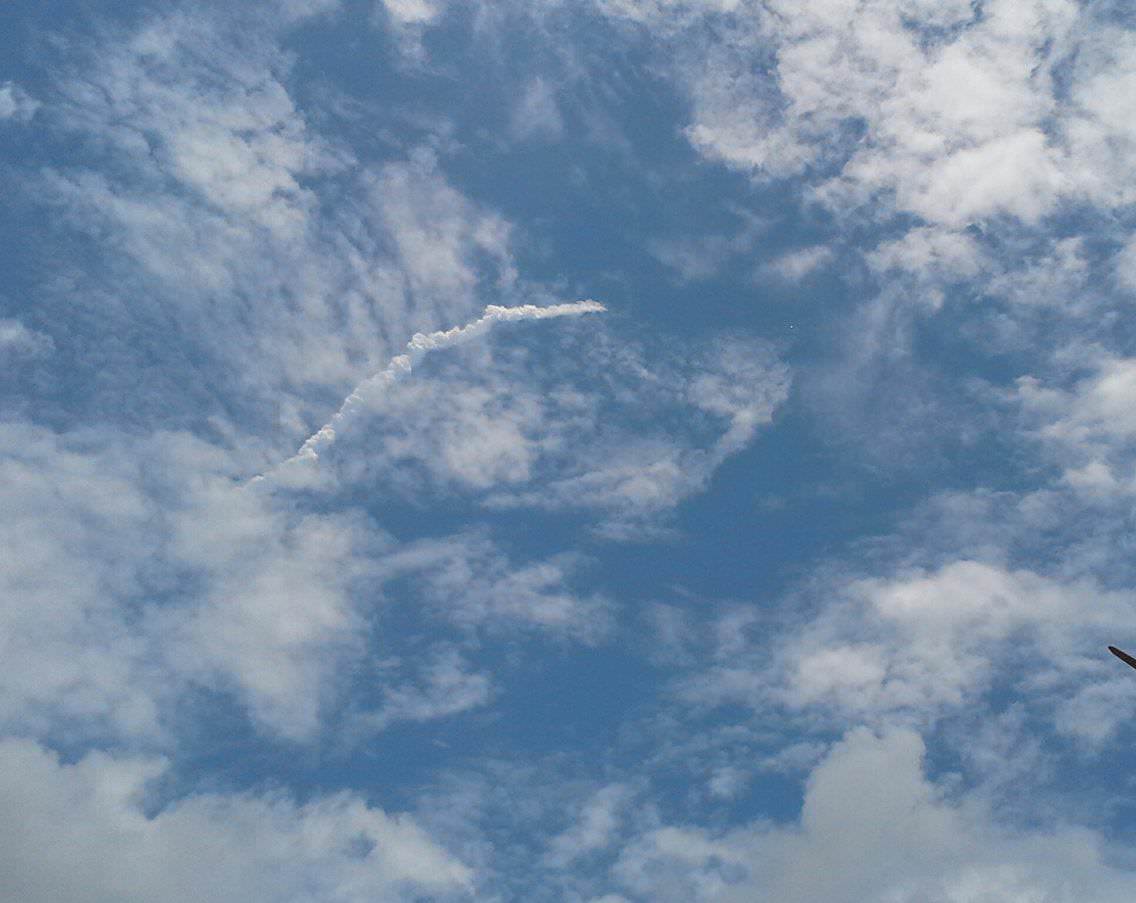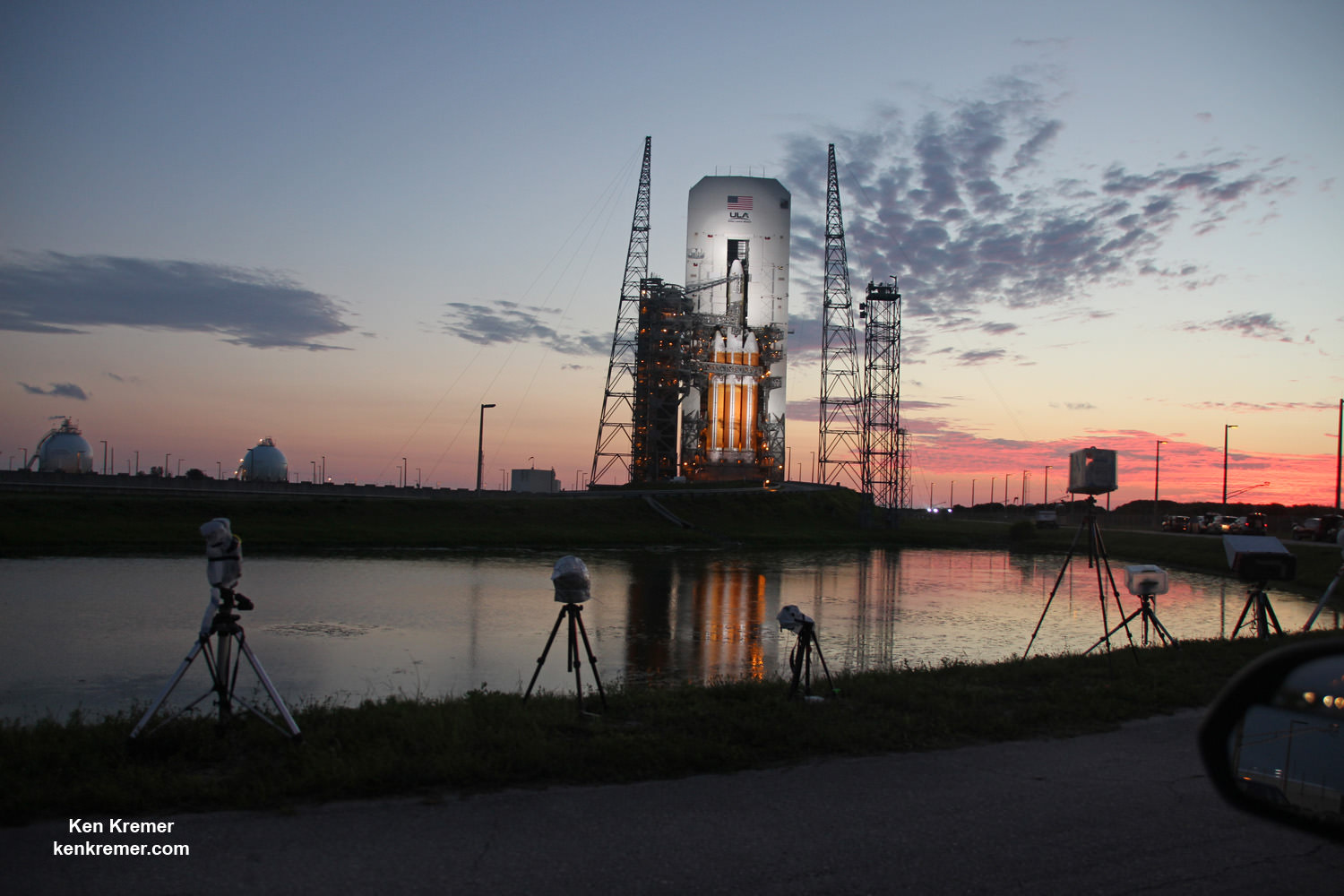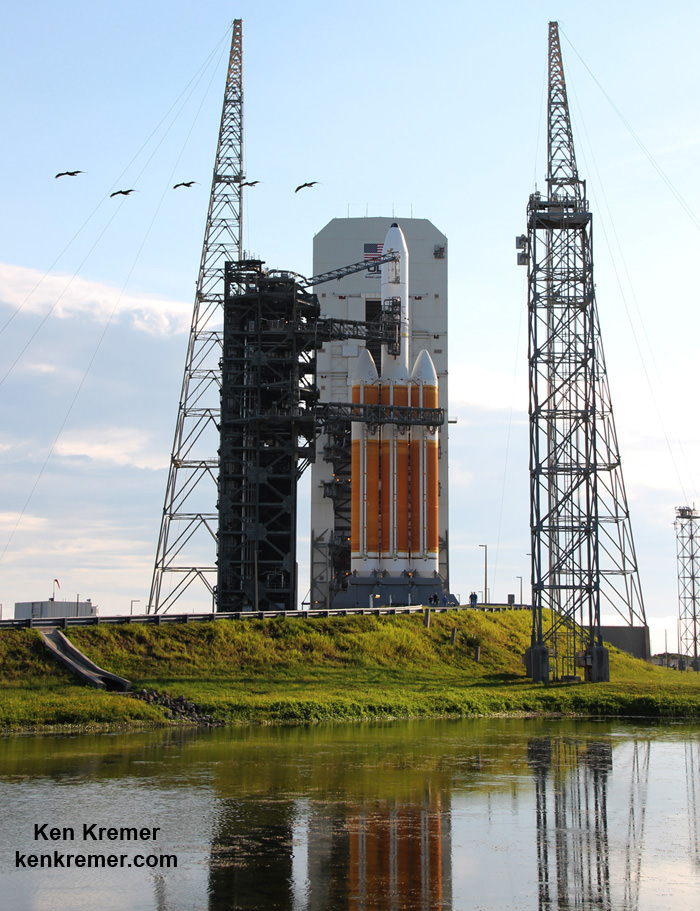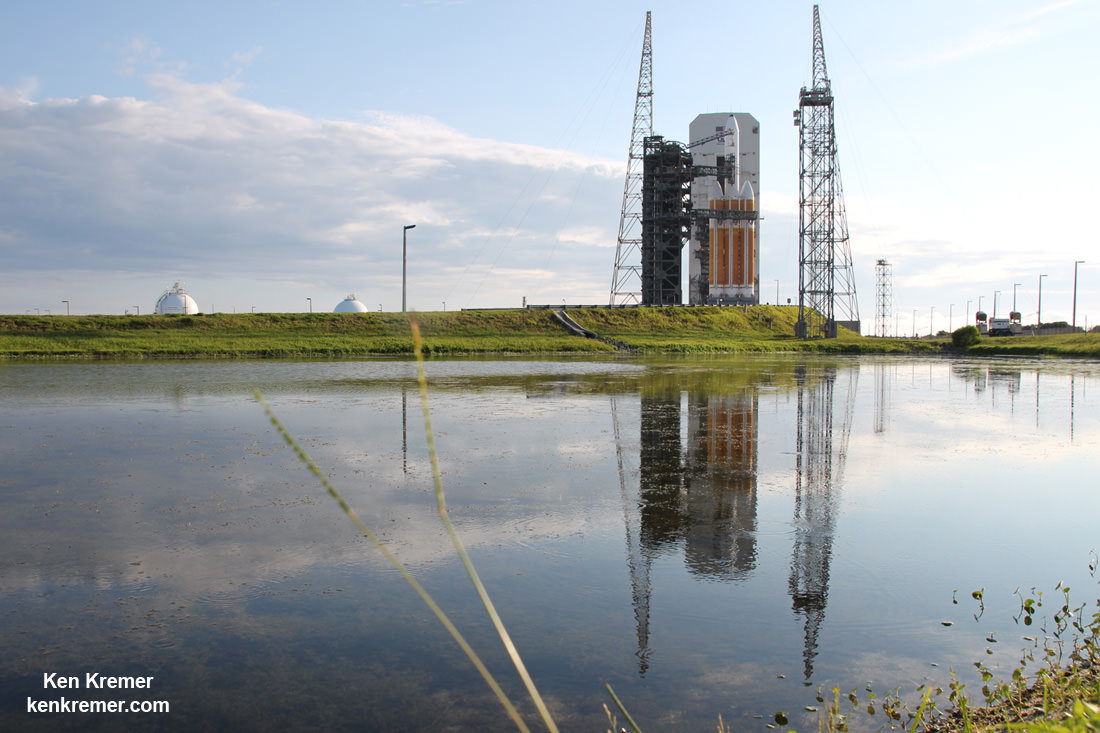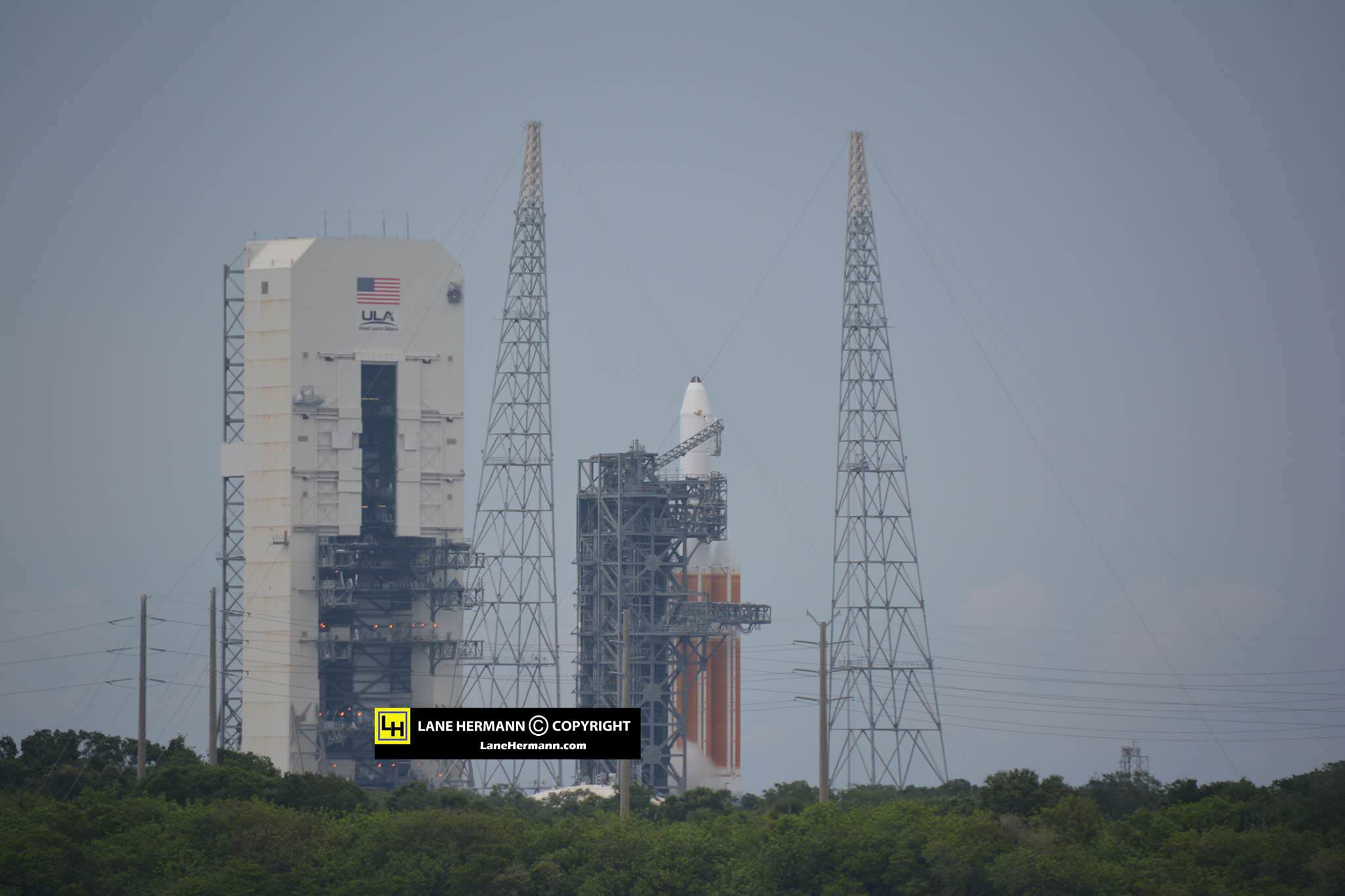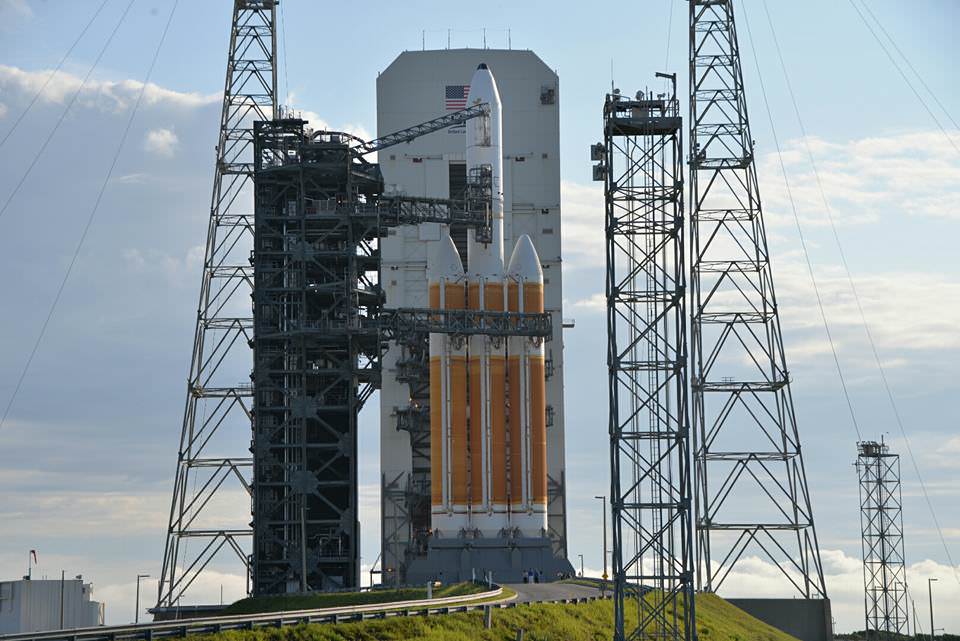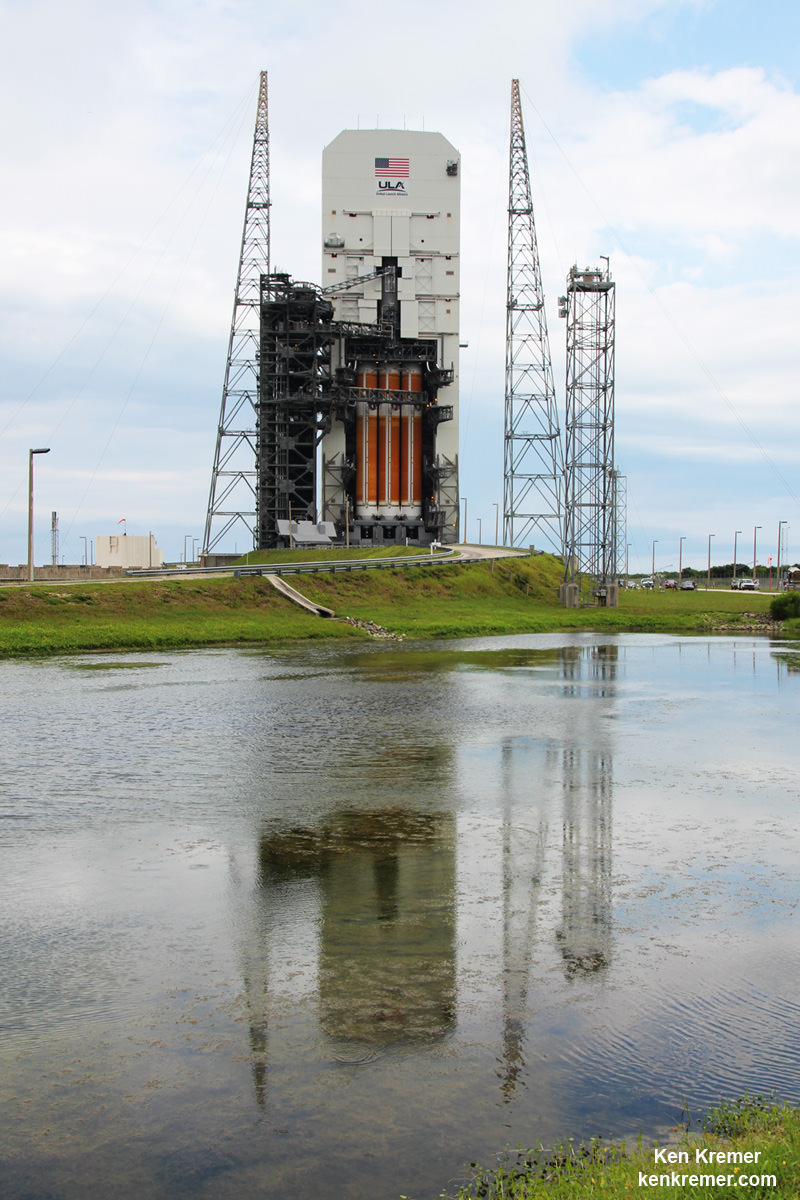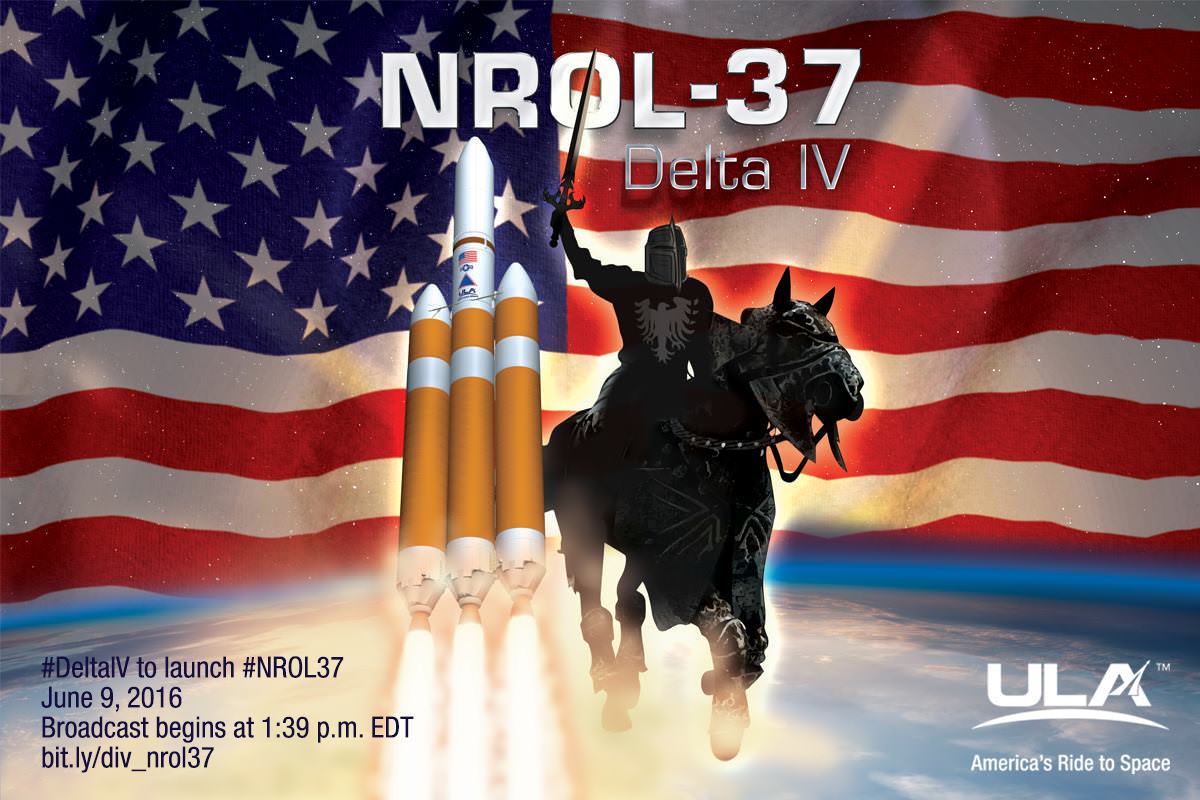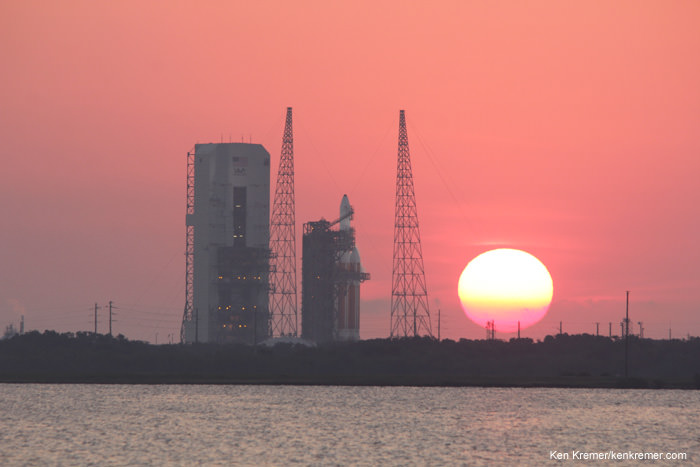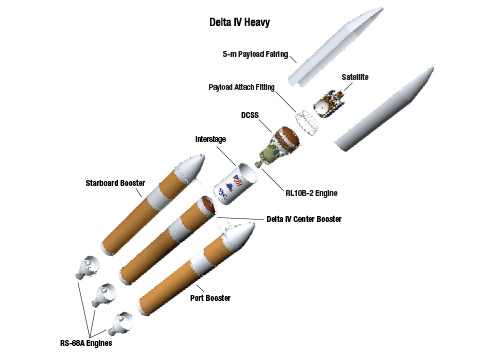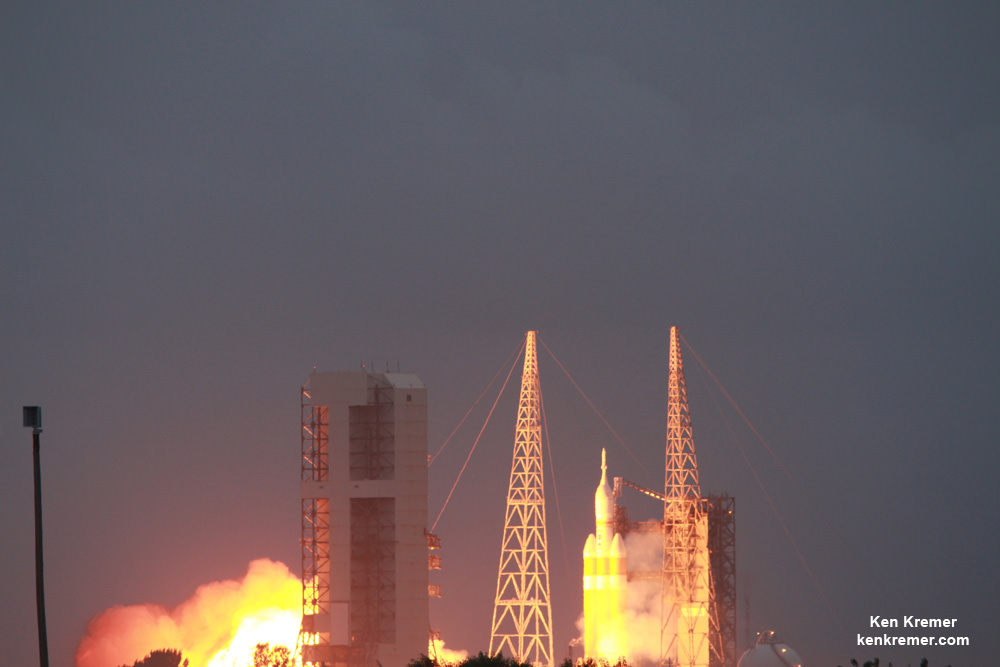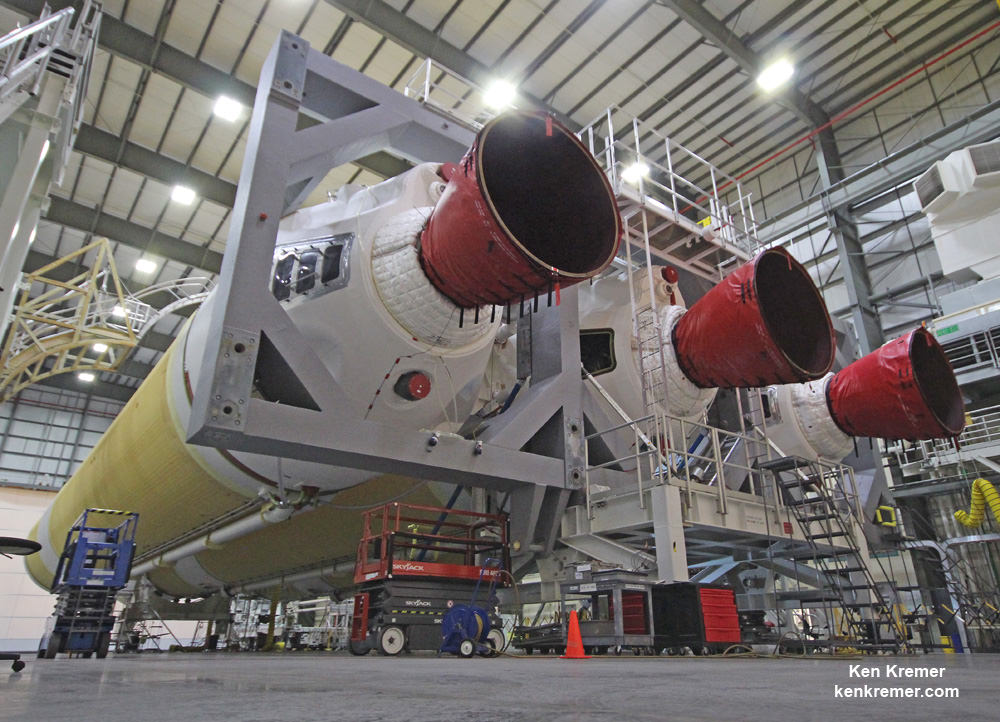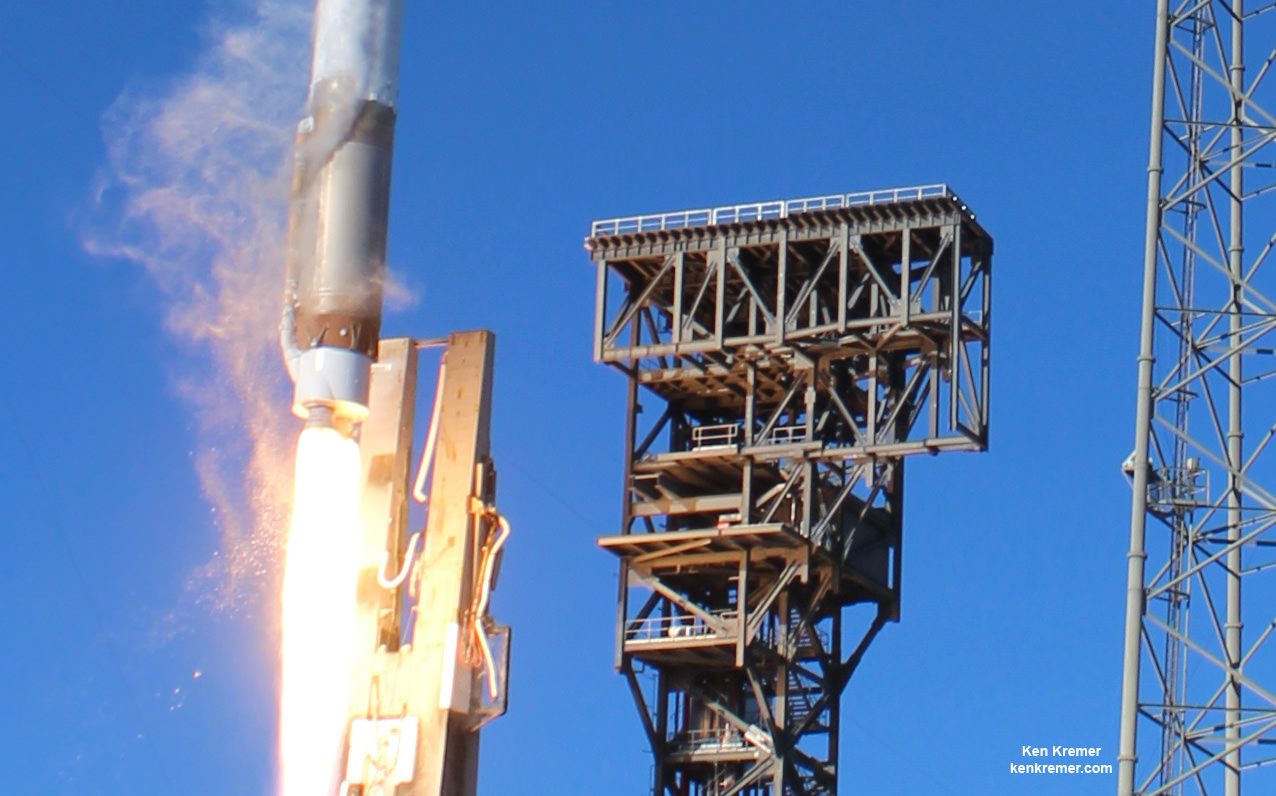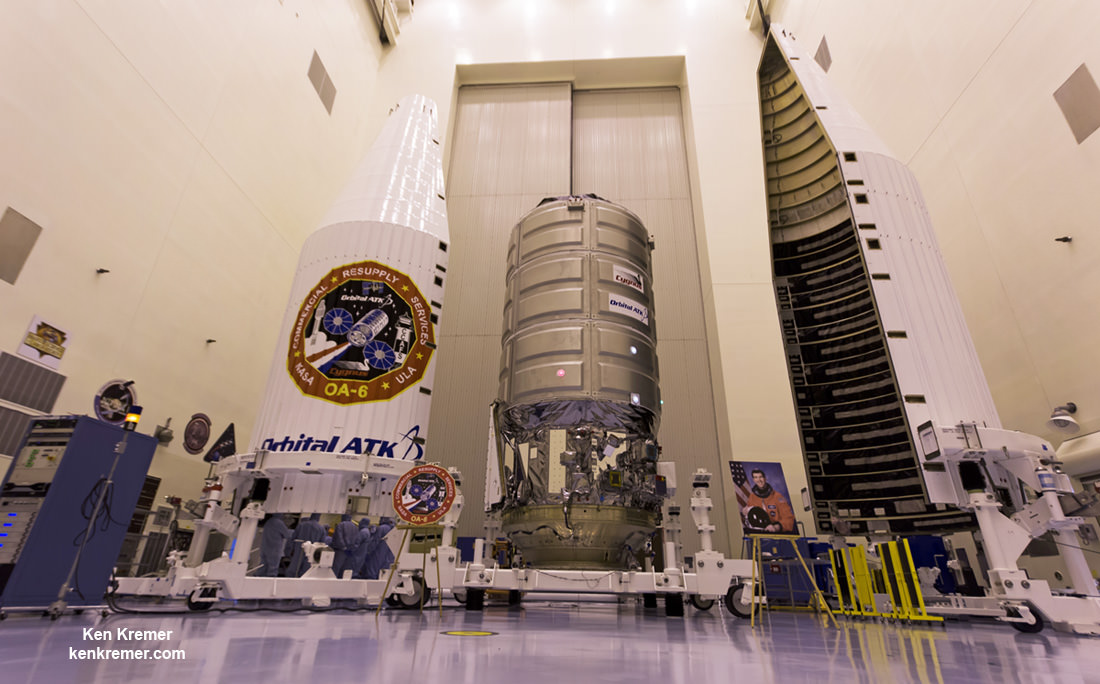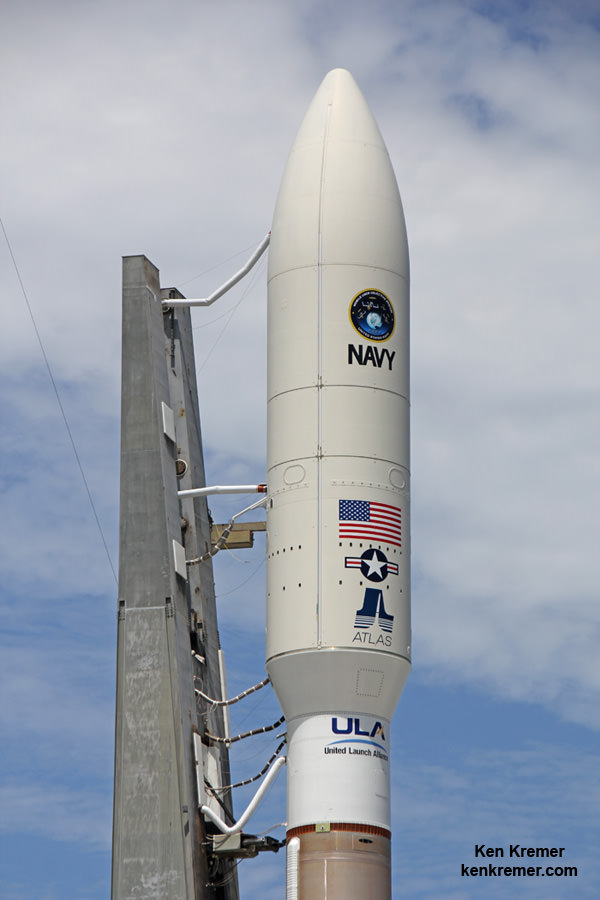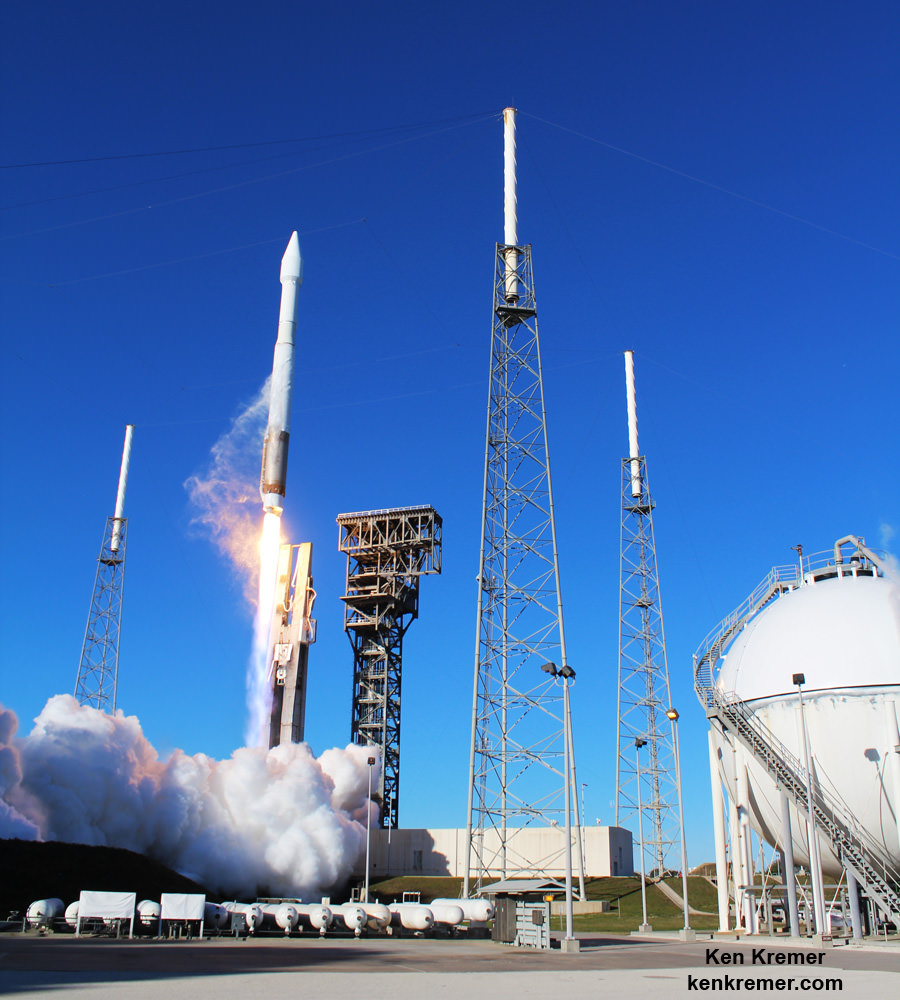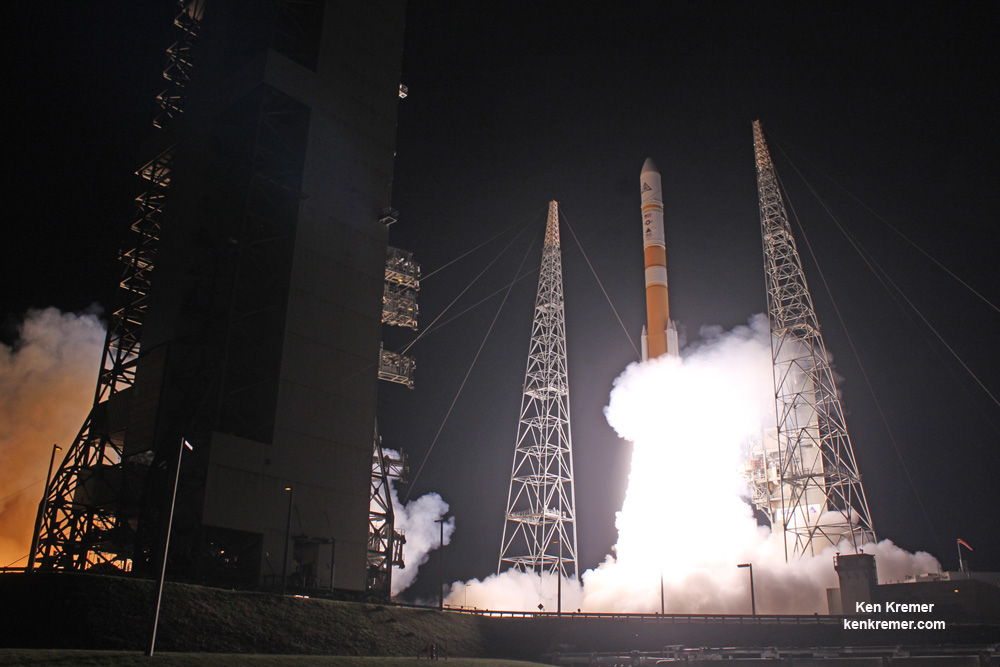
CAPE CANAVERAL AIR FORCE STATION, FL – The highest-capacity US Air Force communications system thundered to orbit during a fabulous nighttime blastoff from the Florida Space Coast, Wednesday evening offering a picture perfect spectacle in addition to a significant boost to military point to point communications.
Hordes of spectators lined space coast beaches and viewing areas to witness the dinnertime launch of the Wideband Global SATCOM (WGS-8) mission for the U.S. Air Force on a United Launch Alliance Delta IV Medium+ rocket at 6:53 p.m. EST on Wednesday, Dec. 7, 2016.
The on time Delta liftoff took place from Space Launch Complex-37 at Cape Canaveral Air Force Station, Florida at the opening of the 49 minute long launch window.
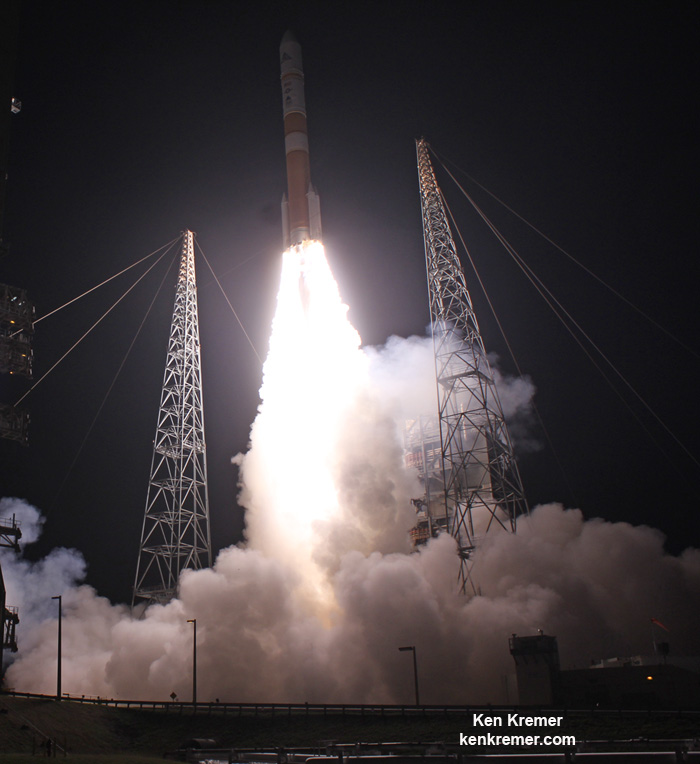
“Thank you to the U.S. Air Force and industry team whose flawless execution enabled today’s successful launch of the WGS-8 mission,” said Laura Maginnis, ULA vice president of Custom Services, in a statement.
“Last week ULA celebrated our anniversary and 10 years of 100% mission success. This evening’s launch epitomizes why our customers continue to entrust ULA to deliver our nation’s most crucial space capabilities.”
WGS-8 was delivered to a supersynchronous transfer orbit atop the United Launch Alliance Delta IV Medium+ rocket.
WGS-8 is the first in a newly upgraded series of a trio of WGS satellites built by Boeing that will nearly double the communications bandwidth of prior WGS models.
The major upgrade is inclusion of the Wideband Digital Channelizer, awarded to Boeing in June 2012.
“Boeing’s eighth Wideband Global SATCOM (WGS) satellite will provide nearly twice as much communications bandwidth as previous WGS satellites due to an upgraded digital payload,” said Boeing in a statement.
The Wideband Digital Channelizer will provide a 90 percent improvement in satellite bandwidth for US military forces.
“Using leading commercial digital circuit technology, the newly upgraded satellite will aid in fulfilling the increasing demand for high-data rate communications of warfighters around the globe.”
WGS-8 was also built for a significantly cheaper price compared to the prior WGS series. WGS-8 cost about $426 million vs. about $570 million for the WGS 7 satellite.
“Not only does WGS-8’s cutting edge digital payload nearly double the satellite’s bandwidth, but the U.S. government was able to realize more than $150 million in savings for WGS-7 through WGS-10 through fixed-price block purchases and commercial operating practices,” said Dan Hart, Boeing vice president, Government Satellite Systems, in a statement.
“We’ve been able to both increase the capability and reduce the per-unit cost with each new WGS satellite we’ve delivered, making WGS, by far, the most cost-effective asset for military communications.”
The 217 foot tall Delta IV Medium+ rocket launched in the (5,4) configuration with a 5 meter diameter payload fairing and powered by one common booster core and four solid rocket motors built by Orbital ATK to augment the first stage.
The common booster core was powered by an RS-68A liquid hydrogen/liquid oxygen engine producing 705,250 pounds of thrust at sea level. A single RL10B-2 liquid hydrogen/liquid oxygen engine powered the second stage.
The booster and upper stage engines are both built by Aerojet Rocketdyne. ULA constructed the Delta IV Medium+ (5,4) launch vehicle in Decatur, Alabama.
The is the sixth flight in the Medium+ (5,4) configuration; all of which were for prior WGS missions.
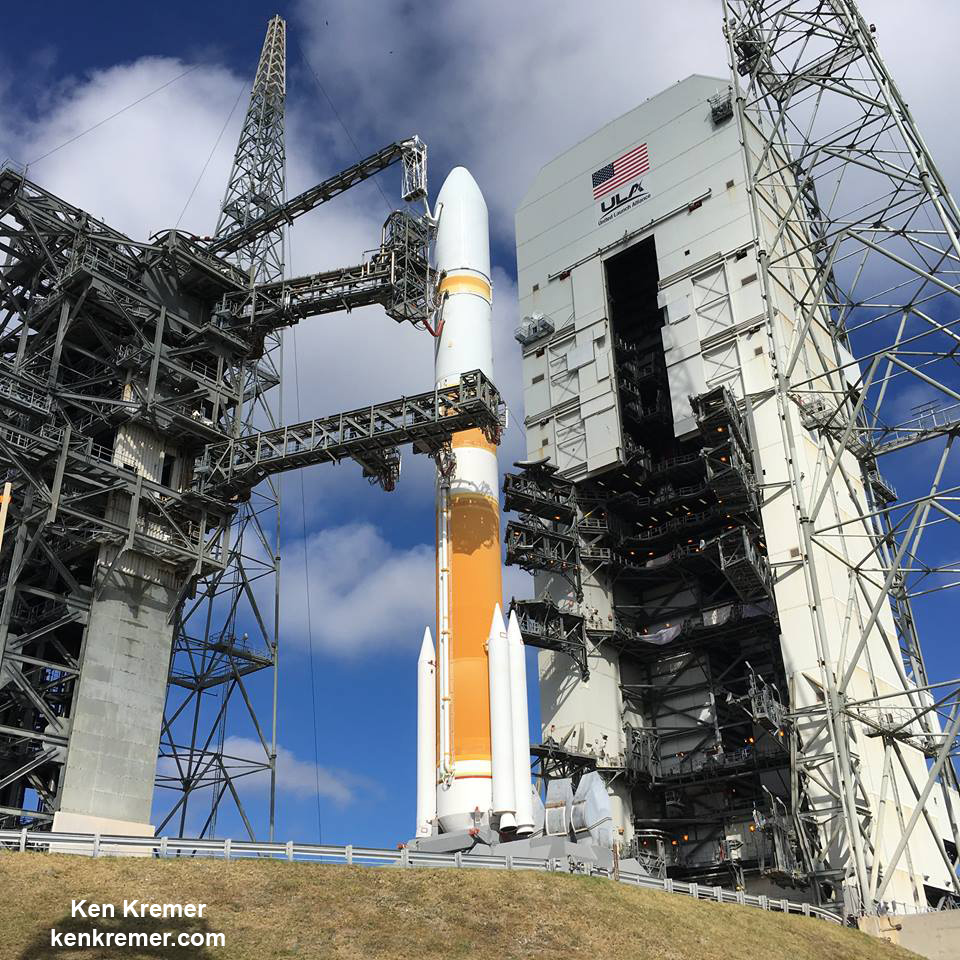
WGS-8 also counts as the first of three launches from the Cape this December. A Pegasus XL rocket will launch on Dec. 12 carrying NASA’s CGYNSS hurricane monitoring satellites. And an Atlas V will launch on Dec. 12 with the EchoStar 23 comsat.
Stay tuned here for Ken’s continuing Earth and planetary science and human spaceflight news.

